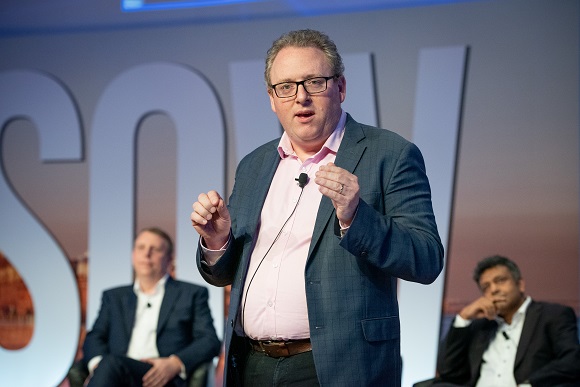RPA series: Enate - why initial RPA projects fail… & how to succeed
This is a guest post for the Computer Weekly Developer Network written by Kit Cox, CEO at Enate – and this story forms part of a series of posts on CWDN that dig into the fast-growing topic of Robotic Process Automation (RPA).
Enate is a service orchestration SaaS platform that manages any vendor technology alongside humans to create a digital workforce. Enate handles work so bot exceptions and failures are flipped back to humans, which eliminates the need to hard-code exceptions. That means businesses can use the time saved to get on with more automation elsewhere in the business.
TechTarget defines Robotic Process Automation as the use of software with Artificial Intelligence and Machine Learning capabilities to handle high-volume, repeatable tasks that previously required humans to perform — these tasks can include queries, calculations and maintenance of records and transactions.
Cox writes as follows…
Are you prepared for your first RPA project to fail?
A report published by Ernst and Young predicts between 30-50% of all initial RPA projects fail. EY cites reasons such as forgetting about IT infrastructure, targeting RPA at the wrong processes and applying traditional delivery methodologies. Another key reason is treating robotics as a series of automations rather than an end-to-end change program.
It’s well-documented there’s a goldmine of value to be found in using RPA to eliminate mundane tasks from human jobs, liberating humans to use our innate skills to do better (and more enjoyable) work.
But deploying RPA is more than setting up a Centre of Excellence (CoE). How RPA slots into your existing processes can be tricky. You must change the way you think about your processes beyond the IT department. The very notion of a ‘job’ will have to change as tasks are mapped to core skills across a resource pool of human competencies and technology capability. Let me explain.
Intelligent building blocks
Think of all the different skills your business requires to deliver a complete service. Let’s say a customer requested some information about an online order. Your employees would need a range of skills and competencies from reading and understanding the email request, manually checking and updating a database, having a conversation and solving problems to provide a good customer experience. Imagine all those skills can be represented by different colour toy building bricks to create a model of your process. RPA can replace ‘skill’ bricks relating to following basic rules (reading, copying and clicking). But, if you remove and replace one brick from within an entire model, it’s likely you’ll weaken – or even break – the overall structure.
There’s also the challenge of ensuring all the different ‘tasks’ involved in delivering a process are completed seamlessly in sync with all your different technologies – alongside clunky legacy systems – and have oversight of all the workers involved.
Without overarching governance and workflow, RPA will merely deliver sub-processes within a service slightly more efficiently. Then, every time a process or technology changes, there’s greater complexity and risk. Businesses need a base plate to build the blocks of the future of work upon.
And then… there’s scaling
Of course, your first RPA project might not fail. But, even if the initial projects don’t fail, getting to a point of scale is still a challenge.
Deloitte’s most recent report found only 3% of companies had achieved substantial scale (based on 478 respondents), citing process fragmentation as the biggest barrier.
Phil Fersht, CEO and chief analyst at HFS Research, calls this struggle to move beyond pilot exercises and project-based experimentation a “serious point of failure for the whole industry”.
The three top RPA vendors (as named by Gartner: Automation Anywhere, Blue Prism and UiPath) have all partnered with Enate to enable RPA at scale, recognising the need for orchestration – and for cross-platform integration and connectivity to ensure RPA’s success at scale.
RPA is forcing us to reassess how our businesses are structured.
Organisational change will have to happen first to realise RPA’s full potential. RPA is just one of the building blocks of a new way of working. Unless businesses crack vendor silos and achieve cross-platform governance across systems and people, RPA will not meet the industry’s – or your – expectations.

Cox: RPA is forcing us to reassess how our businesses are structured.



